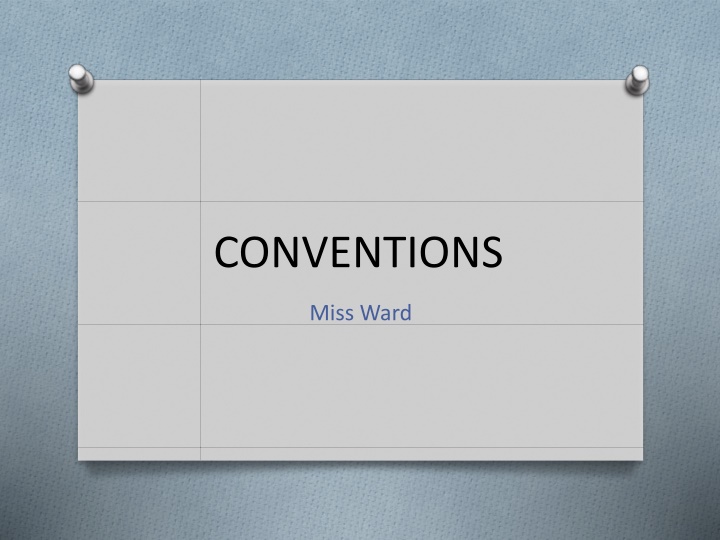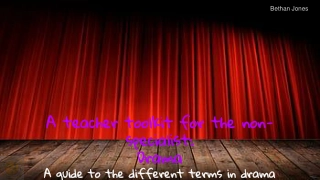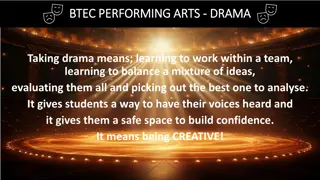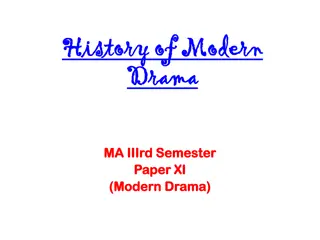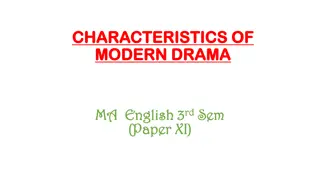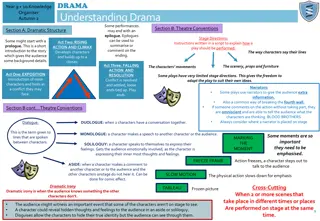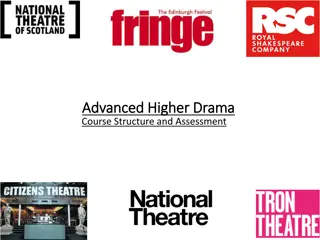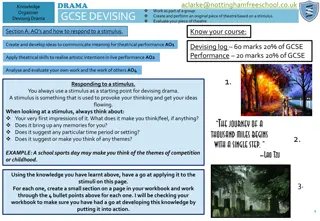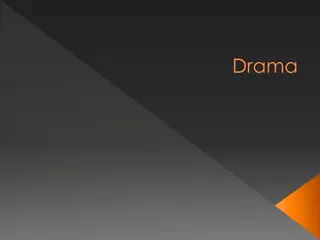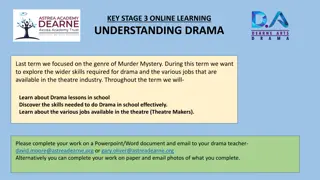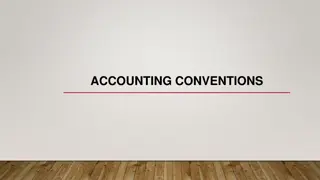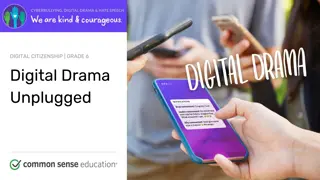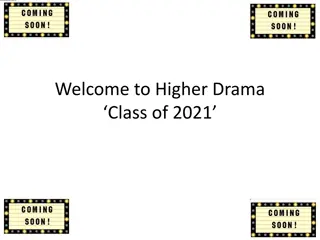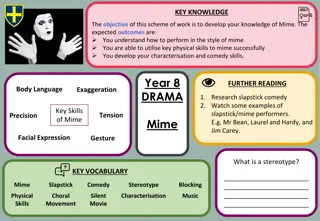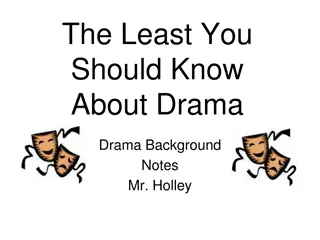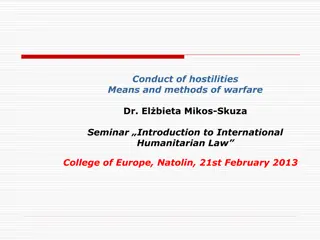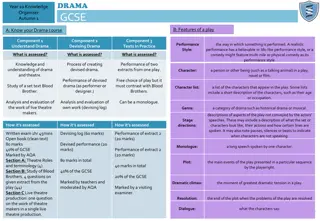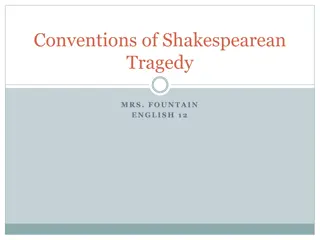Drama Conventions and Techniques
Conventions in drama, such as flashbacks, narrators, slow motion, monologues, and more, enhance storytelling by creating mood, atmosphere, and engaging the audience. Techniques like tableau, freeze frame, mime/movement, and voiceover add depth to productions.
Download Presentation

Please find below an Image/Link to download the presentation.
The content on the website is provided AS IS for your information and personal use only. It may not be sold, licensed, or shared on other websites without obtaining consent from the author.If you encounter any issues during the download, it is possible that the publisher has removed the file from their server.
You are allowed to download the files provided on this website for personal or commercial use, subject to the condition that they are used lawfully. All files are the property of their respective owners.
The content on the website is provided AS IS for your information and personal use only. It may not be sold, licensed, or shared on other websites without obtaining consent from the author.
E N D
Presentation Transcript
CONVENTIONS Miss Ward
What is a Convention? Conventions are devices that can be added to a drama to enhance the storytelling or help the audience to understand the drama. They can also be used to create a certain form/genre/style within a production. They can also help to create mood and atmosphere.
FLASHBACK A flashback moves the action back in time and breaks the chronological sequence of events FLASH FORWARD As with a Flashback this moves the action through time, the action jumps forward instead of backwards
NARRATOR A narrator tells parts of the story, this can help the audience to understand the drama better especially in a Non-Linear structure. SLOW MOTION Slow motion is when actions are performed at a slowed-down speed. It can help to highlight key moments or enhance dramatic parts of the drama such as fight scenes
MONOLOGUE One character speaks their thoughts out loud or uses an extended speech, directed to the audience or another character. SOLILOQUY One character speak their thoughts aloud, different from a Monologue as they are speaking to themselves not another character or the audience.
TABLEAU Actors create a living picture that can represent an action, idea or moment in the story FREEZE FRAME All the actors freeze on stage. It can allow the audience to take in more information about going on. It can be useful in portraying violent events such as a car accident or fight
MIME/ MOVEMENT Mime or movement can be used to highlight key moments and can add a powerful contrast when also using dialogue within a drama. It can also help to establish mood and atmosphere VOICEOVER A Voice-over can be off stage or recorded speech played during the production. It can help with audience understanding as well as providing interesting contrast to the action on stage
